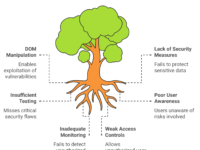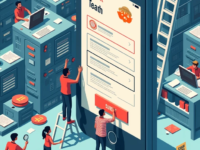Hey there, fellow testing enthusiasts! 👋 Today, we’re diving deep into something that’s completely revolutionizing the way we think about test automation. Spoiler alert: It’s AI, and it’s not just another buzzword!
The Problem with Traditional Testing…

Let’s face it – we’ve all been there. You spend weeks crafting the perfect test scripts, only to have them break because someone moved a button 2 pixels to the left. Or maybe you’re struggling to keep up with testing new features because your test maintenance is eating up all your time. Sound familiar?
According to recent studies, teams spend up to 40% of their time just maintaining existing test scripts. That’s like buying a car and spending almost half your time fixing it instead of driving it!
Enter AI: The Game Changer
Here’s where things get exciting. AI-powered testing isn’t just about automating tests – it’s about making them smarter. Let’s break down the cool stuff:
1. Self-Healing Scripts (Yes, They Actually Heal Themselves!)
Remember that button that moved 2 pixels? AI-powered tests can actually find it automatically. The latest research shows these self-healing mechanisms have a 78% success rate in fixing broken tests without any human intervention. Mind-blown yet? 🤯
2. Smart Test Generation
Imagine having an AI assistant that:
- Watches how users interact with your application
- Automatically creates test cases based on real usage patterns
- Identifies edge cases you might have missed
And the best part? It’s not science fiction – it’s happening right now!
The Numbers Don’t Lie
Let’s talk results (because who doesn’t love some good stats?):
- 45% reduction in test maintenance effort
- 70% increase in bug detection
- 30% reduction in overall testing time
Just look at the chart above to see the dramatic difference between traditional and AI-powered testing approaches.
Getting Started with AI Testing
Ready to jump on the AI testing bandwagon? Here’s your game plan:
- Start Small: Pick a specific feature or module to experiment with
- Gather Data: The more historical test data you have, the better your AI models will perform
- Hybrid Approach: Don’t throw away your existing tests – complement them with AI-powered solutions
Common Pitfalls to Avoid
Let’s be real – it’s not all rainbows and unicorns. Here are some things to watch out for:
- Over-reliance on AI without human oversight
- Insufficient training data
- Not having clear success metrics
What’s Next?
The future of AI in testing is incredibly exciting. We’re seeing developments in:
- Natural language processing for test creation
- Visual testing with computer vision
- Predictive analytics for test prioritization
The Bottom Line
AI in test automation isn’t just another trend – it’s a fundamental shift in how we approach quality assurance. The numbers speak for themselves, and the technology is only getting better.
Ready to take your testing game to the next level? Start small, experiment, and don’t be afraid to fail. Remember, even the most sophisticated AI started with a simple “Hello, World!”
Got questions about implementing AI in your testing strategy? Drop them in the comments below! Let’s learn from each other’s experiences. 🚀
P.S. Want to stay updated on the latest in AI testing? Don’t forget to subscribe to our newsletter!










